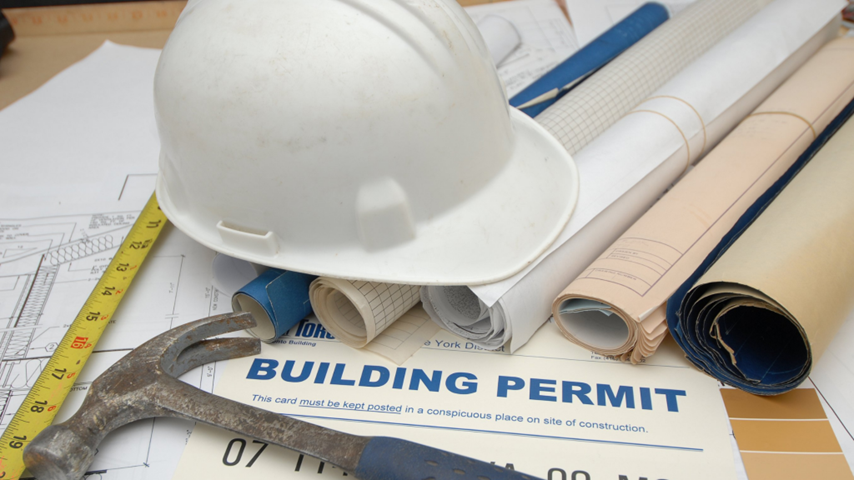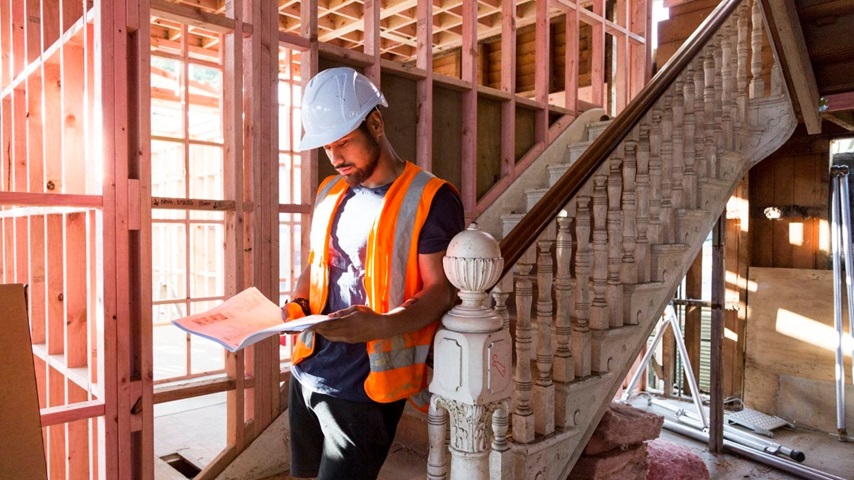Having a solid understanding of the building process, especially the step regarding permit approval, can greatly benefit your renovation project, making it more efficient and seamless. Understanding this can provide you with the confidence needed to move forward with your big project.
If you have limited knowledge about the process for obtaining a building permit, there’s no need to worry. This information, and the steps provided in this blog post, are an excellent starting point for beginners.
What Exactly Is a Building Permit?

The building approvals process involves getting an official document from the government and your local building department, i.e. the permit. This document grants you the necessary permission to proceed with your renovations or construction project. Going through the building permit process is a prudent and responsible approach to ensure that you are adhering to all required protocols. During remodelling, it’s important to consider potential issues such as land-use standards or zoning concerns. By obtaining a building permit approval, you can avoid facing these concerns in the middle of your project and continue moving forward smoothly.
Understanding the Necessity of Building Approvals
There are specific requirements that must be met in order to proceed with large remodelling projects, as mandated by the law. While the building permit process can be challenging, it is essential for ensuring the safety of individuals both during and after construction. Instead of allowing the permit process to become a source of stress, consider approaching it as a vital checklist to ensure the safety of all parties involved.
What is the Process for Obtaining a Building Permit?
Having a simple building permit inspection checklist can be incredibly useful for individuals who are starting their home renovation journey. Naturally, the following points provide a basic overview of the permit process, offering some helpful guidance to business or building owners who may be uncertain about where to begin.
Discussions and Preparations
This activity serves as a prelude to any given endeavour, especially when multiple teams (such as architects and civil engineers) are involved. During this stage, a team collects all relevant data for a proposed undertaking, evaluates the extent of the development’s scope, and investigates potential methods for project delivery.
The scope of work in this phase includes:
- Location of the property;
- Type of the proposed development;
- Goals, needs and requirements to be fulfilled and achieved;
- The budget for the proposed development;
- Types of building and purposes;
- Architectural style;
- Familiarisation with the client’s information provided.
Finalise Construction Drawings and Documentation
Once you are satisfied with the building design and the appropriate authorities have issued the necessary approvals, you can hire a team to begin preparing construction documentation and will collaborate closely with the engaged engineers and consultants to ensure consistency with the architectural drawings, specifications, approvals, and client requirements.
This phase requires advanced technical knowledge to create precise construction drawings and building specifications for the proposed development. Drawings are the visual component of construction documentation, whereas building specifications are written requirements for materials, equipment, installation of nominated items, and construction systems that outline the quality, building regulations, and standards to be met during the construction process.
Talk to a Contractor
If you’re someone who lacks knowledge or enthusiasm for navigating the building permit process, it would be wise to consider hiring a contractor. Rest assured, your contractor is well-versed in the building permit process and can provide you with peace of mind. If you have other planning to do, hiring a contractor could be a more convenient option, despite the additional cost.
Contact the Building Department for Assistance

If you choose not to work with a contractor, scheduling a meeting with your local building department can be a helpful first step. An experienced professional will discuss the project with you and provide detailed information about any necessary permits you may need to obtain. There are various types of specialised permits available, such as plumbing permits, carpentry permits, and electrical permits.
Fill Out the Application Form
After the meeting, when the professional mentions the need for a permit, they will provide you with an application that needs to be filled out. If you choose not to collaborate with a contractor, it is essential to fill out the application yourself. Please ensure that the application contains all necessary materials for the renovation, including a map or drawing of the project. Including specific details in the application is crucial to avoid any unexpected surprises or problems.
Post the Permit At the Worksite
Once the application and building permit have been approved, work can commence at the site! Ensuring that all building permits are securely displayed at the development site is of utmost importance. Visibility is crucial for professionals and inspectors to have access to. It is common practice to prominently display the building permit on the front door for easy visibility during the development process.
